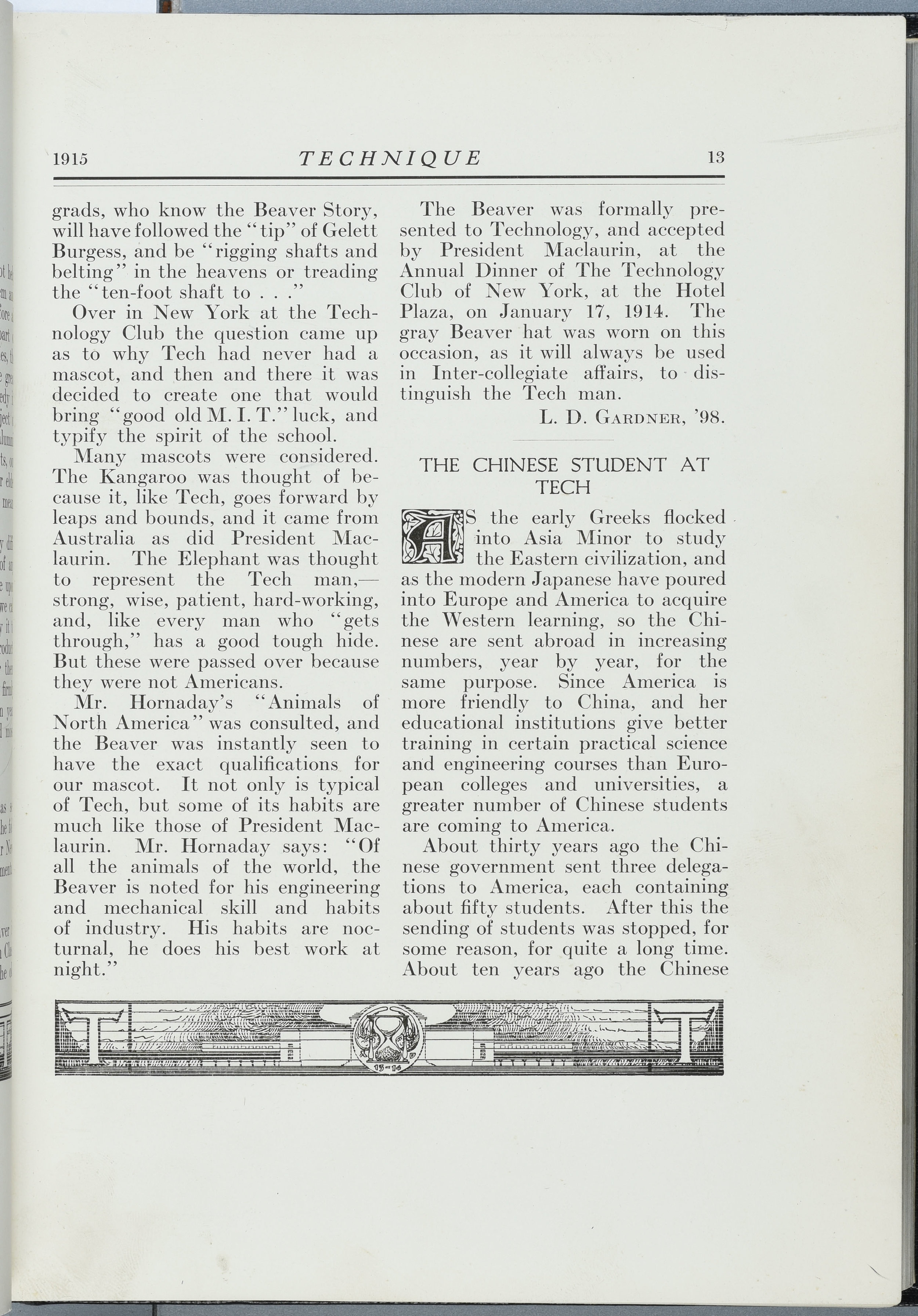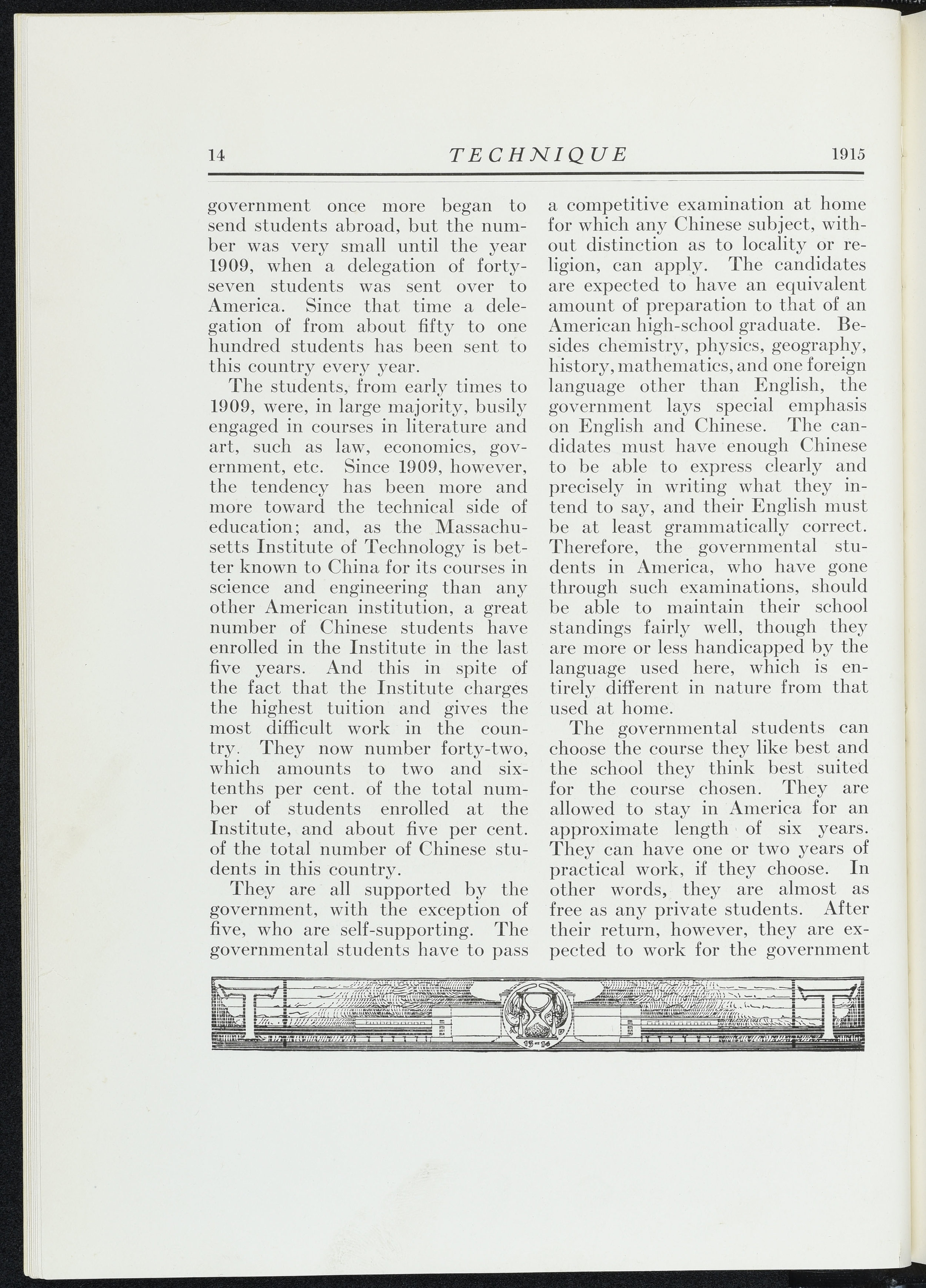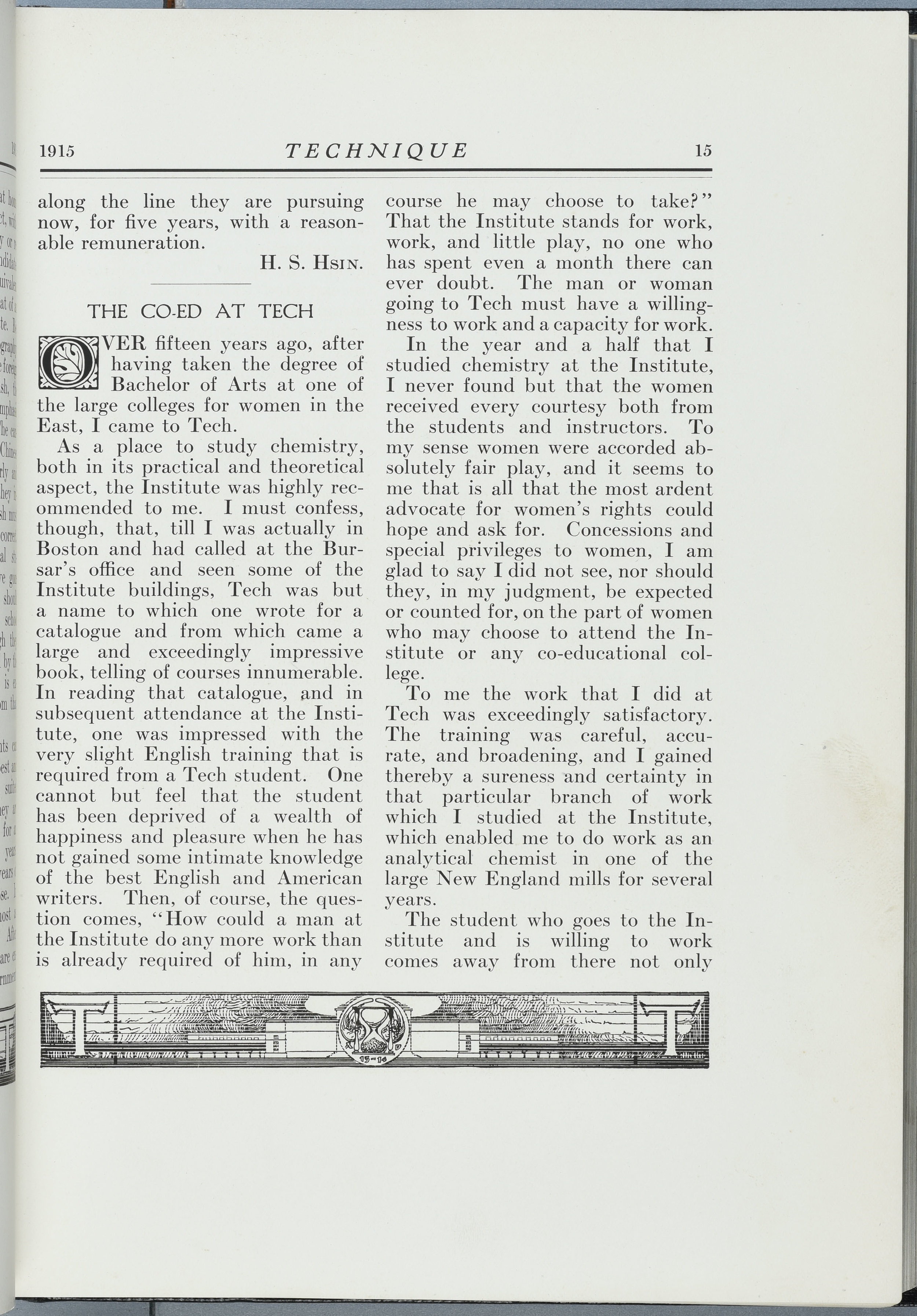Chee Sing Hsin 邤契莘 (1887-1957)
A Boxer Indemnity Scholar, CS Hsin was an early graduate of MIT's program in Naval Architecture and Marine Engineering. He went on to become a famous naval engineer in China, appointed First Class Naval Construction Officer in 1918.
CS Hsin, Senior Class Portfolio 1914. Courtesy MIT Archives and Special Collections.
CS Hsin 邤契莘 (1887-1957, Class of 1914, Marine Engineering, MS 1916)
Mandarin pinyin Xing Qixin, a native of Zhejiang province, hailed from a famous local gentry family. An outstanding student, Hsin studied at the Hangzhou Middle School and the Nanyang Middle School in Shanghai, and was married in 1904 before entering the competitive Zhili Provincial College at Baoding in 1909 as a Provincial Recommended Student. In the following year, he won a coveted scholarship in the first round of the Boxer Indemnity Scholarship examinations, and went to the US. Hsin was one of a group of Chinese government students who spent the academic year 1909-1910 at Williston Seminary in Easthampton, Massachusetts prior to matriculating at MIT, the others being MC Hou, Paul Hwang Hsu, WG Loo and YL Wu. Taking the scientific curriculum, Hsin was an honors student at Williston, writing his senior thesis on the topic of "Civilization of China." At MIT, Hsin joined the Cosmopolitan Club, the Chinese Students' Club, and the Naval Architectural Society. He was a member of the Chinese Students' Club debate team that proudly defeated their Amherst counterparts in a debate in November 1911, taking the affirmative stance on: "Resolved That Industrial Development Is More Important for China Than Military Achievements." Hsin won further prizes the following year for debate and oration. He served as President of the MIT Chinese Students' Club in 1915, Councilman At-Large for the Chinese Students' Alliance (1916), Manager for the Chinese Students' Quarterly (1912 and 1915), and Editor of the National Defense Magazine (Guofang bao) in 1916. With AL Pitz, Hsin wrote his thesis on The Stability of Lifeboats. After completing his BS in Marine Engineering in 1914, Hsin went on to receive his MS from MIT in the same field in 1916. He furthermore gained on-the-job experience working as a naval architect for the Newark Shipbuilding Company and the W. Marine Equipment Company in 1913, and as a Machinist at the Fore River Shipbuilding Corporation in 1915. Returning to China in July 1916, Hsin worked as an engineer for the Taku Shipbuilding Company at Tianjin, then for the Navigation Bureau at Qingdao, the Aerial Navigation Bureau at Mukden, the Northeastern Aviation Bureau at Mukden, and the Northeastern Shipbuilding Company at Harbin, and served in the Navy in 1920. Hsin also served as the Director of the Fuzhou Shipyard at Mawei, as Director of the Mechanical Engineering Division, Aeronautics Administration of Beijing, and the first Director of the Northeast Shipyard. In the wake of the Mukden Incident of 1931, Hsin took a position with the China Merchants Group, managing the Shanghai Shipyard. During the war years, he assumed a critical role working for the National Government in the aviation sector, contributing to the national defense against Japan. Hsin was appointed Supervisor of the Central Aircraft Manufacturing Factory. As Supervisor of the Central Aircraft Manufacturing Factory in Yunnan, he supervised the construction of the Nanshan Military Airport. In addition to his engineering work and numerous government posts, Hsin also taught at the Peking Agricultural College and China University. After the Communist Revolution of 1949, Hsin moved to Hong Kong, then Taiwan, where he lived out his years.
“The Chinese Student at Tech," by CS Hsin, Technique 1915, 13-15. Courtesy MIT Archives and Special Collections.
Sources: MIT Senior Class Portfolio 1914, CS Hsin, "The Chinese Student at Tech," Technique 1915, 13-14, MIT Chinese Students Directory: For the Past Fifty Years, 1931, “Publicity in China: How our Chinese Students Are Helping to Make Technology Known in Their Native Land.” Technology Review v. 16, n. 8, Nov. 1914, pp. 564-566, Jiaoyu zhi qiao: cong Qinghua dao Mashengligong/Bridge of Education: From Tsinghua to MIT. Hong Kong: Cosmos Point Limited, 2011, Baidu, materials from Williston Northampton School Archives. Who's Who of American Returned Students (You Mei tongxue lu), Beijing: Tsinghua College, 1917.



